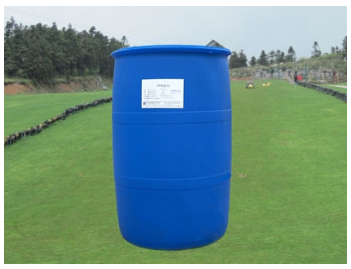When the concentration is high, a bilayer adsorption film is formed on the metal surface due to the interaction of hydrophobic groups. The increase of the surfactant concentration can improve its corrosion inhibition efficiency. When the concentration is increased to make it reach saturation adsorption on the metal surface, it shows a good corrosion inhibition efficiency. For a certain series of surfactants, the corrosion inhibition efficiency is The critical micelle concentration cmc reaches a large value.
The effect of hydrophobic long-chain alkyl groups on corrosion inhibition is more complicated. When the chain length is shorter and the alkyl groups on heteroatoms are less, the lengthening of the carbon chain and the increase of alkyl groups can improve the corrosion inhibition effect of surfactants. This is because the adsorption of surfactants on the metal surface is provided by heteroatoms to provide lone electron pairs to form coordination bonds with metal ions on the metal surface. The alkyl group is an electron-repelling group. The effect increases the electron cloud density on the heteroatom, making the formed coordination bond more stable, which is beneficial to improve the corrosion inhibition efficiency. However, the solubility of surfactants with too long carbon chains decreases, so that the concentration in the corrosive medium cannot reach the concentration required for saturated adsorption. Therefore, after reaching a certain chain length, the number of carbon atoms is further increased, and the corrosion inhibition efficiency decreases. .
Surfactant molecules have lipophilic and hydrophilic groups and are amphiphilic molecules. Water is a strong polar liquid. When the surfactant dissolves in water, according to the principle of similar polarity and opposite polarity, its hydrophilic group and water are attracted and soluble in water, and its lipophilic group is soluble in water. Repel each other and leave water, as a result, surfactant molecules (or ions) are adsorbed on the interface of the two phases, so that the interfacial tension between the two phases is reduced. The more surfactant molecules (or ions) are adsorbed on the interface, the greater the reduction in interfacial tension.

When the surfactant is adsorbed on the metal surface, its hydrophilic group is adsorbed on the metal surface. Due to the different properties of the hydrophilic group, physical adsorption or chemical adsorption occurs with the metal surface. The adsorption of different surfactants on the metal surface follows different adsorption isotherms. When the surfactant concentration is low, a monomolecular adsorption layer is formed on the metal surface, and the hydrophobic non-polar part forms a water-repellent barrier in the aqueous solution. covered with metal surfaces.